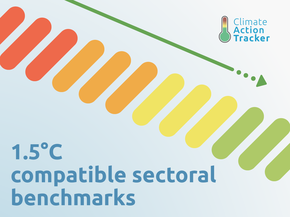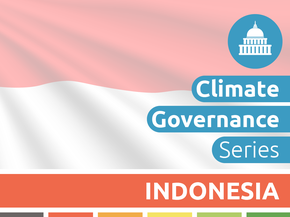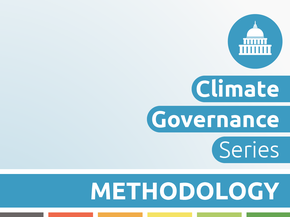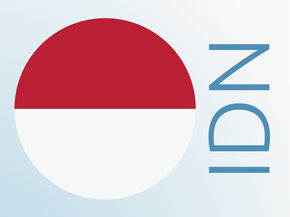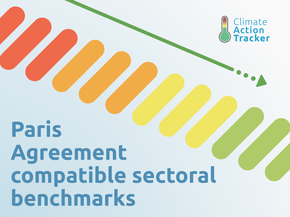Country summary
Overview
This assessment includes our policy analysis from 22 September 2020 translated into our new rating methodology without new analysis of Indonesia’s climate policies since then, except the NDC update submitted in July 2021. We will fully analyse Indonesia in the coming months and the rating may change.
The CAT rates Indonesia’s climate targets and policies as “Highly insufficient”. The “Highly insufficient” rating indicates that Indonesia’s climate policies and commitments lead to rising, rather than falling, emissions and are not at all consistent with the Paris Agreement’s 1.5°C temperature limit.
Both Indonesia’s unconditional and conditional NDCs are rated “Critically insufficient”, meaning the targets are inconsistent with Indonesia’s fair share contribution and modelled domestic pathways. The CAT rates Indonesia’s policies and action as “Insufficient”. These policies and action still lead to increasing emissions, but at lower levels than the NDC targets. Indonesia needs to set more ambitious targets for emissions reductions and establish associated policies, partially with international support, to get a better rating.
According to our analysis, Indonesia will by far overachieve their “Critically insufficient” NDC targets with implemented policies and actions, but emissions continue to rise. We rate Indonesia’s policies and action as “Insufficient” compared to their fair share contribution, where the projected emissions under current policies falls at the upper limit of the “Insufficient” range. The “Insufficient” rating indicates that Indonesia’s climate policies and action in 2030 need substantial improvements to be consistent with the Paris Agreement’s 1.5°C temperature limit. If all countries were to follow Indonesia’s approach, warming would reach over 2°C and up to 3°C. A great concern is the continued reliance on fossil fuels.
The government has earmarked approximately IDR 720 trillion (USD 48 billion) to fund the national recovery from COVID-19. The National Economic Recovery (PEN) presents an opportunity to increase investment in low-carbon development, but the current plans make no attempt to set the country on a low-emissions pathway – and recent developments suggest it is doing the opposite.
Additional fossil fuel support is underway with the government committing a large proportion of its recovery plan to the state utility company (PLN), without assigning conditions to such a bailout. Indonesia plans to install about 27 GW of coal-fired electricity by 2028: it is one of only five countries in the world that started new coal plant construction in 2020 and has the fourth largest coal pipeline with more than 30 GW of coal fired power generation in development (6% of the global share).
Shifting investments from the coal expansion the government plans for the next five years towards renewable, zero-carbon solutions is crucial in getting Indonesia onto a sustainable development pathway compatible with the Paris Agreement. As of August 2020, PLN’s power sector plan for the next ten years had not yet been published, which still gives the government an opportunity to adjust its plans and change course from the construction of new coal-fired power plants, and instead plan for a just transition to phase out coal by 2040.
Policies to support low-carbon development in Indonesia need adjustments to realise their full mitigation potential. Some design elements of policies supporting the uptake of renewables and the general investment environment still favour large-scale, fossil-fuelled power and prevent a swift and large-scale expansion of renewables.
The full analysis of policies and action can be found here.
We rate Indonesia’s conditional NDC as “Critically insufficient” when compared to modelled domestic pathways. The “Critically insufficient” rating indicates that Indonesia’s conditional target in 2030 reflects minimal to no action and is not at all consistent with the Paris Agreement’s 1.5°C temperature limit. If all countries were to follow Indonesia’s approach, warming would exceed 4°C.
We rate Indonesia’s unconditional NDC as “Critically insufficient.” The “Critically insufficient” rating indicates that Indonesia’s fair share target in 2030 reflects minimal to no action and is not at all consistent with the Paris Agreement’s 1.5°C temperature limit. Indonesia’s target is not in line with any interpretation of a fair approach to meeting the Paris Agreement’s 1.5°C limit. If all countries were to follow Indonesia’s approach, warming would exceed 4°C.
Indonesia’s emissions from Land-use, land-use change and forestry have contributed to almost 50% of the country’s total emissions over the last 20 years. Emissions from the sector have shown strong fluctuations at a high level, and with an increasing trend. Reducing emission from deforestation is a vital part of Indonesia’s climate action.
Indonesia does not yet commit to a net zero target, but explores scenarios that could lead to net zero by 2060 or sooner. For further information, see the Climate Target Update Tracker.
Further analysis
Country-related publications
Stay informed
Subscribe to our newsletter

